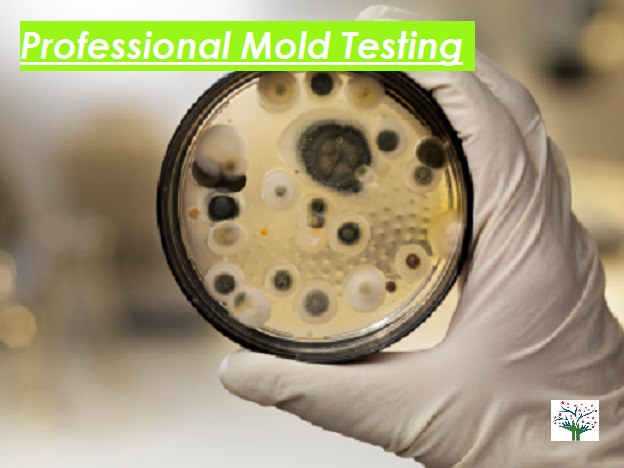Ensuring Conformity With Rules: the Duty of Mycotoxin Evaluating in High Quality Control
Guaranteeing conformity with rigid laws is extremely important for maintaining food safety, and the role of mycotoxin testing in top quality control can not be overstated. Mycotoxins, hazardous substances generated by certain mold and mildews, pose considerable health and wellness dangers, making their detection vital in food production. Adherence to regulative criteria, such as those set by the FDA and EU, requires durable screening techniques and innovations to determine and evaluate these contaminants. By implementing complete screening methods, business can stop possible health dilemmas, avoid pricey recalls, and preserve consumer count on. The complexities of these testing procedures raise important inquiries regarding their performance and effectiveness.
Understanding Mycotoxins
Comprehending mycotoxins is fundamental to making certain the high quality and security of farming products. The most well-known mycotoxins include aflatoxins, fumonisins, trichothecenes, and ochratoxins, each connected with certain fungal types and ecological conditions.
The visibility of mycotoxins in food products can lead to severe and chronic health and wellness concerns, including liver damages, immune suppression, and carcinogenic effects. By understanding the resources, types, and impacts of mycotoxins, stakeholders in the farming industry can better implement preventative measures and mitigate threats, making sure much safer consumption for end-users.
Governing Specifications for Mycotoxins
Having developed a fundamental understanding of mycotoxins and their influence on food safety, it is necessary to evaluate the regulatory criteria controling their visibility in farming items. Regulatory criteria for mycotoxins are important due to the fact that they specify acceptable limits, making sure food safety and security and safeguarding public wellness. Various global and nationwide companies have set these limitations based on detailed threat assessments.
The Codex Alimentarius Payment, a worldwide body established by the FAO and WHO, provides standards and optimum allowable levels for various mycotoxins in food and feed. The Codex has actually established limits for aflatoxins in peanuts, maize, and dried figs, among various other products. These requirements are commonly adopted or adapted by private countries to fit their details requirements.
In the European Union, Law (EC) No 1881/2006 stipulates optimum levels for numerous mycotoxins, such as aflatoxins, ochratoxin A, and deoxynivalenol, in numerous food items. The U.S. Food and Medication Management (FDA) has actually developed action degrees for mycotoxins like aflatoxins in commodities such as nuts and grains.
Adherence to these regulative standards is important for keeping market gain access to, consumer count on, and public health. Non-compliance can cause substantial financial losses and health dangers, emphasizing the relevance of stringent mycotoxin screening protocols.
Examining Techniques and Technologies

ELISA is extensively valued for its cost-efficient and rapid testing capacities, making it perfect for high-throughput atmospheres. It relies on antibodies to discover details mycotoxins, offering lead to a reasonably short time frame. Its level of sensitivity might be limited compared to much more sophisticated methods.
HPLC, on the other hand, excels in giving quantitative evaluation with high precision and accuracy. It separates intricate mixtures into individual parts, making it very view effective for recognizing and evaluating several mycotoxins concurrently - Mycotoxin testing Services. This strategy, while extra time-consuming and go to the website resource-intensive than ELISA, uses a greater level of dependability

LC-MS stands for the peak of logical uniqueness and sensitivity. Combining the splitting up power of liquid chromatography with the detection capabilities of mass spectrometry, LC-MS can identify even trace levels of mycotoxins. This technique is crucial for confirming the existence of mycotoxins in forensic and regulative contexts, guaranteeing conformity with strict security requirements.
Executing Checking Methods

Incorporating these sophisticated screening techniques into a comprehensive quality assurance framework demands a well-structured technique to executing testing procedures. To achieve this, companies should first conduct a thorough threat assessment to recognize prospective mycotoxin contamination factors within the supply chain. This evaluation educates the advancement of a customized screening strategy that attends to details vulnerabilities.
Following, establishing standard sampling procedures is vital. Regular tasting makes sure that test outcomes are dependable and agent of the whole batch (Mycotoxin testing Services). Following standards from regulative bodies, such as the FDA or EFSA, helps keep compliance and improves the trustworthiness of the testing procedure
Educating workers is one more crucial component. Personnel must be skilled in both sample collection and the procedure of screening equipment. Normal training sessions and qualification programs can make certain that team members stay upgraded with the most recent methods and regulative useful link modifications.
Advantages of Mycotoxin Examining
Mycotoxin screening offers various benefits that dramatically enhance the safety and security and top quality of food and feed products. Primarily, it works as a vital control measure to avoid infected products from reaching the customer market, thus guarding public wellness. By determining and quantifying mycotoxins such as aflatoxins, fumonisins, and ochratoxins, producers can ensure that their products satisfy rigorous regulatory requirements, hence avoiding possible lawful repercussions and connected prices.
Furthermore, mycotoxin screening contributes to the financial feasibility of food and feed markets by minimizing the danger of massive product recalls. The capacity to detect and isolate polluted batches early in the production procedure lowers waste and prevents the economic losses connected with damaged brand track record. It fosters consumer trust and commitment, as customers are progressively aware of food safety problems and need higher top quality requirements.
The application of routine mycotoxin testing additionally promotes finest practices within farming and manufacturing markets. By adhering to extensive screening protocols, companies can optimize their top quality control procedures, improve functional effectiveness, and make certain the consistent manufacturing of risk-free, top quality products. Finally, the advantages of mycotoxin testing are complex, adding to public wellness, financial security, and market honesty.
Final Thought
Mycotoxin testing is critical in ensuring conformity with regulative requirements, thereby preserving food security and top quality control. Hence, mycotoxin testing stays an important component of contemporary food safety and security monitoring systems.
Making certain compliance with stringent guidelines is extremely important for preserving food safety and security, and the function of mycotoxin screening in quality control can not be overemphasized.In the realm of mycotoxin testing, progressed modern technologies and methods are essential in guaranteeing food safety and security and regulatory compliance.Mycotoxin testing uses countless benefits that considerably boost the safety and security and high quality of food and feed items.Mycotoxin screening is vital in making sure compliance with regulative requirements, consequently keeping food security and high quality control. Hence, mycotoxin screening remains an essential element of modern-day food safety monitoring systems.